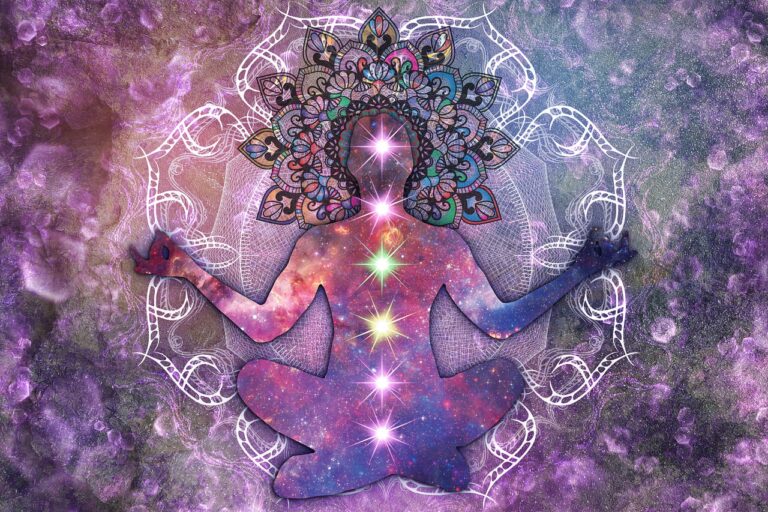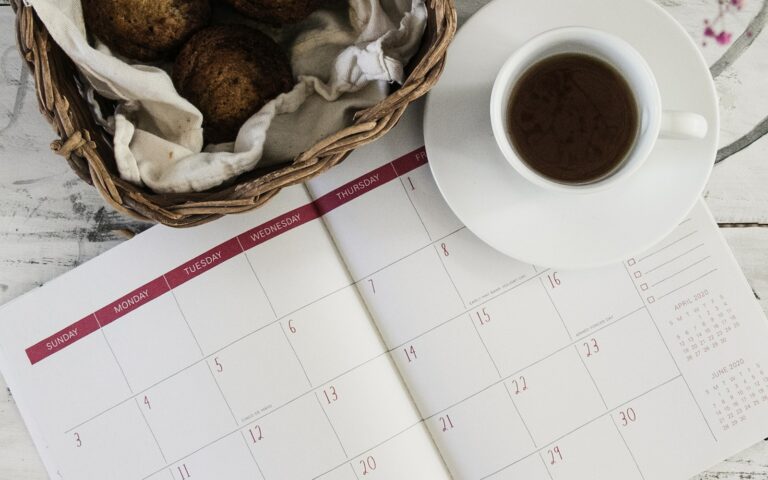5 Pranayama Breathing Techniques for the Complete Beginner
Breathe in. Breathe out. Become aware of yourself at this moment.
Everyone breathes, but only some can breathe with consciousness and reverence. When we bring our mind to the breath, we are reminded of our aliveness and interconnection to all life.
The body breathes itself automatically, but the real magic happens when we set our mind on the breath, especially in yoga postures, as it helps to calm and focus the mind as we move in and out of poses or sit in quiet meditation.
PIN ME!
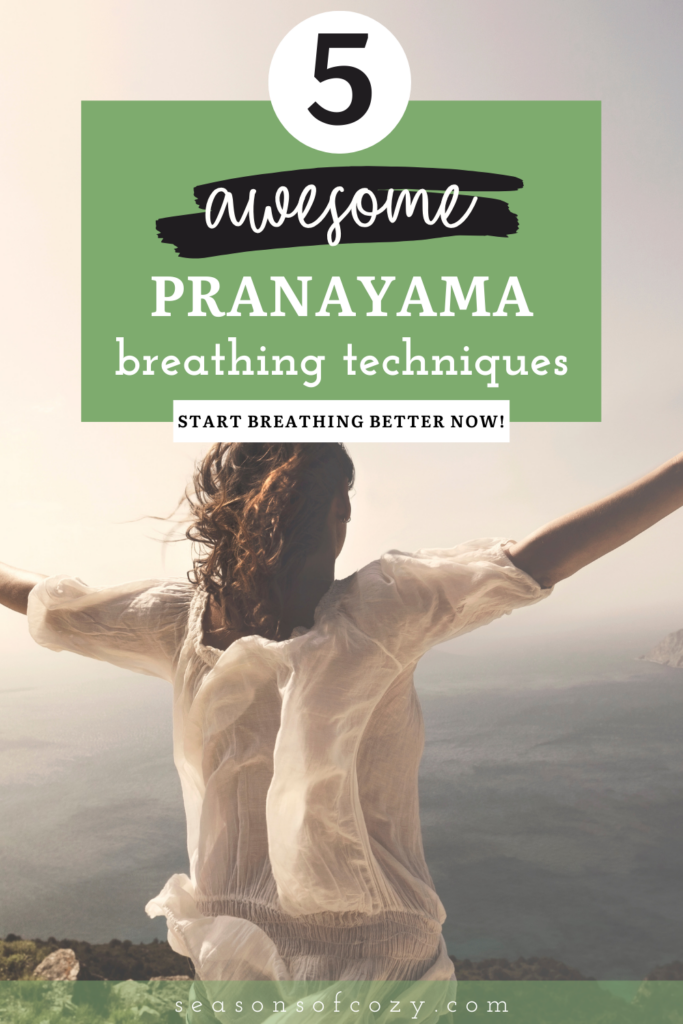
Let’s look deeper at this ancient yoga practice and how to cultivate the breath.
What is pranayama?
In yoga, pranayama is the technique of controlling the breath to bring awareness, balance, and vitality to the body when practicing yoga, meditation, or any time of day when we feel unfocused or stressed.
The quality of our breath is vital in how we live our lives. We can live a more stress-free life if we can slow our breath.
Why is our breath vital in yoga?
How pranayama breathing techniques aids your poses and meditation practice:
- increases focused
- keeps you balanced
- calms the nervous system
- reduces the risk of injury in poses
- increases concentration
- cultivating prana(life-force energy)
The first thing to do is breathe in and out with awareness.
Use the mantra “inhale” and “exhale” while keeping your mind focused on your breathing. Once you have done this, please move on to the following exercises and incorporate them into your yoga routines and life.
“Breath is the bridge which connects life to consciousness, which unites your body to your thoughts.”
~Thich Nhat Hanh~
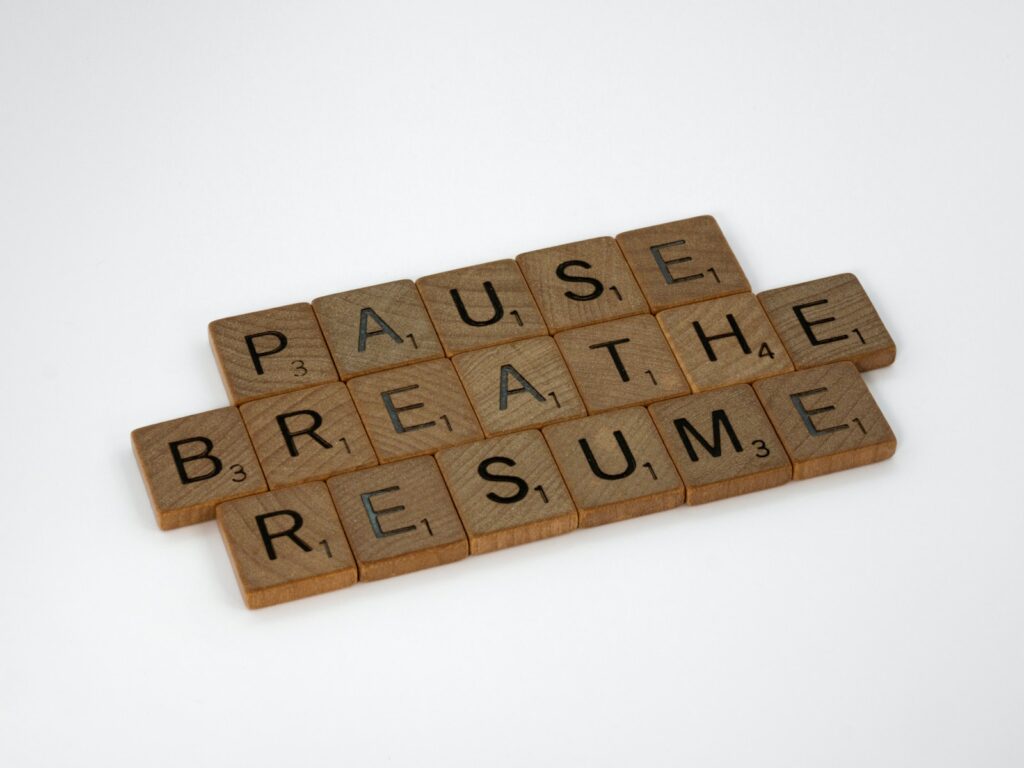
5 Best Pranayama Breathing Techniques
Let’s begin with five easy pranayama breathing exercises for beginner yogis!
Equal Breath
Sama(equal) Vritti(mental fluctuations) pranayama is the practice of the inhale, and the exhale is the same length.
Benefits:
- Develops breath awareness
- Increases lung capacity
- Better sleep
- Calms the nervous system
To Practice:
- Using a mental count, inhale for a count of 4.
- Exhale for a count of 4.
- Repeat for 5 to 10 rounds.
You can increase this over time, but the main point is that the breaths are equal in length. As a beginner, this is the most straightforward exercise when you are just starting to gain awareness.
Box Breath
Box Breath, also known as four-square breathing, is similar to equal breath in that the breaths are an equal length, but between the inhale and exhale, there are pauses of the same length.
Benefits:
- Eases worry
- Cleanses the lungs
- Lowers stress levels
- Increases focus
To Practice:
- Using a mental count, inhale for a count of 4.
- Hold for a count of 4.
- Exhale for a count of 4.
- Hold for a count of 4.
- Repeat for 5 to 10 rounds.
You can increase or decrease the count as you see fit, and do not hold your breath if you find it uncomfortable.
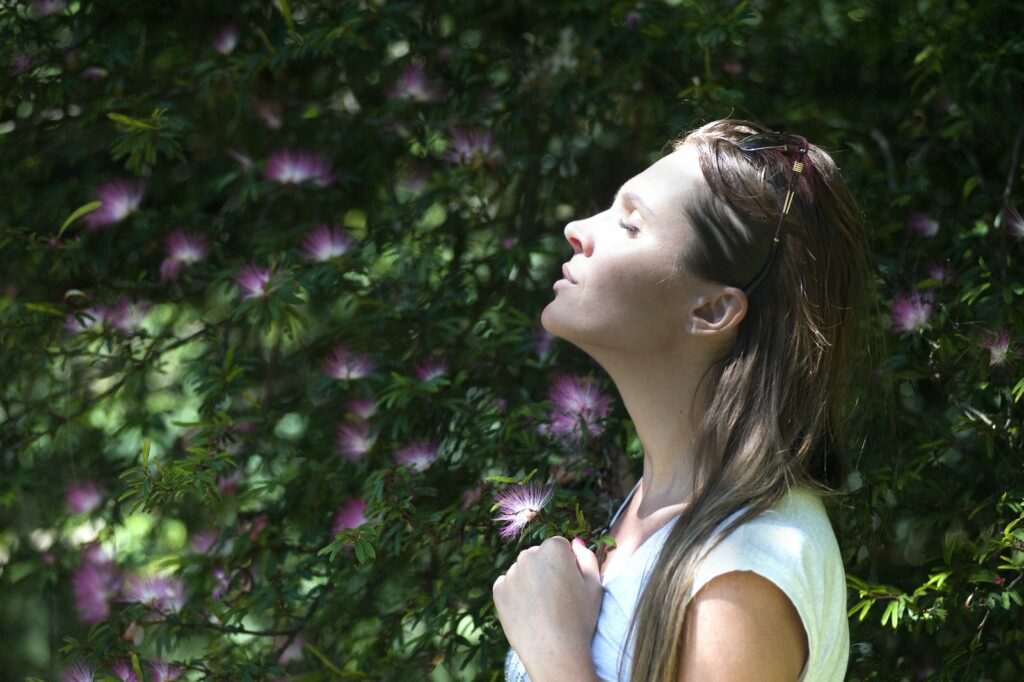
Ujjayi Breath
Ujjayi means “victorious” and is often called the ocean breath because of its sound when you slightly restrict the back of the throat and breathe through the nose. This breath is kept high in the chest, not in the abdomen.
Benefits:
- Builds heat in the body
- Boosts vitality
- Increases concentration
- Calms the mind
- Diminishes headaches
To Practice:
- Begin by exhaling with your mouth open, like you are trying to fog a mirror.
- Feel the constriction in the throat as it makes a rushing sound.
- Feel the constriction on your inhale.
- When ready, close your mouth and breathe through the nose with this slight constriction.
- Keep your spine straight and chest open. Breathe with the sound of the ocean in your throat.
- Repeat for 5 to 10 rounds.
You can place your tongue on the roof of your mouth right behind your teeth to relax the jaw.
2:1 Breath
2:1 breath is a technique that involves exhaling twice as long as you inhale. You can combine this with ujjayi breath or nadi shodhana.
Benefits:
- Balances brain activity
- Soothes the nervous system
- Sparks creativity
- Helps ease anxiety
To Practice:
- Begin with equal breath.
- As you breathe, begin to lengthen the exhale naturally
- Inhale for a count of 4.
- Exhale for a count of 8.
- Increase or decrease as you see fit.
- Repeat for 5 to 10 rounds.
As you practice, your lung capacity and counts will increase.
Diaphragmatic Breathing
Diaphragmatic breathing, also called abdominal or belly breathing, helps you use the diaphragm correctly as you breathe. Being familiar with your diaphragm enables you to breathe easier.
Benefits:
- Strengthen the diaphragm
- Increases oxygen in the blood
- Reduces the heart rate
- Reduces blood pressure
To Practice:
- Lie in Savasana.
- Bring your right hand to your belly and your left to your chest. Breathe normally. Feel the breath.
- As you inhale, feel the rise of your stomach, and as you exhale, feel it fall. The hand on your chest should remain still throughout.
- Repeat for 5 to 10 rounds.
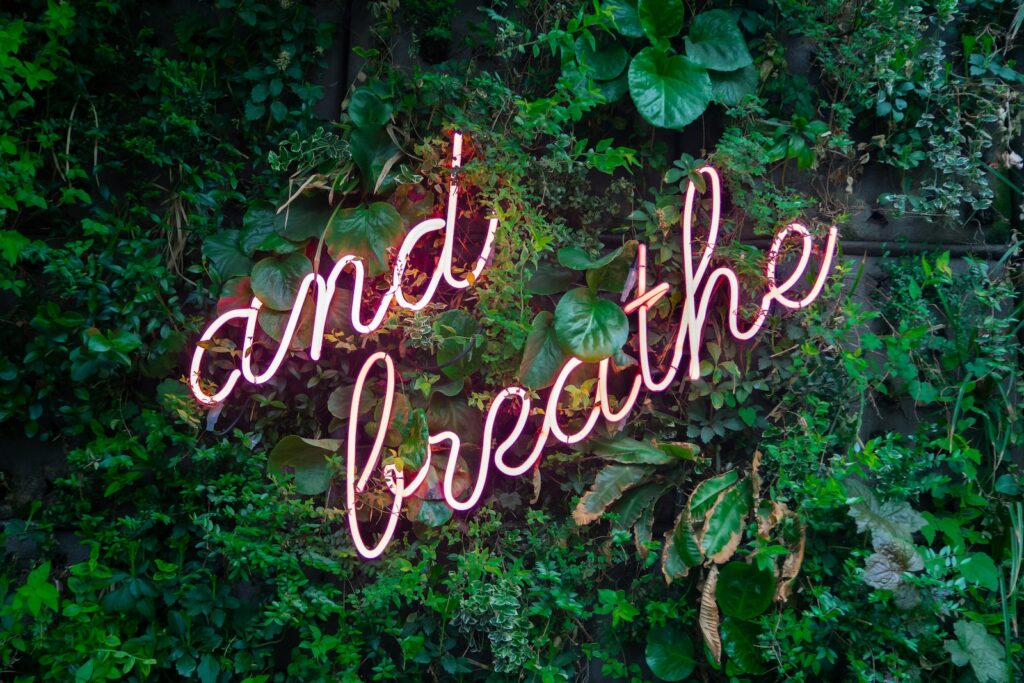
Conclusion
There are many ways to use our breath to improve our quality of life. This is just one part of yoga that can help improve your health and enhance your spiritual life.
If you want to learn about the other parts of yoga, read my post on the 8 Limbs of Yoga Here!
Please feel free to leave a comment and tell me how breathing better has helped you!
Stay Cozy and breathe!




